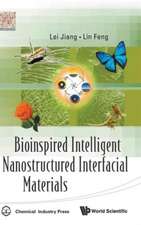Materials for a Sustainable Future
en Limba Engleză Hardback – 17 sep 2012
Sustainability is becoming more and more important in our everyday lives and this book is a non-exhaustive look at materials and how they relate to sustainability. This concerns not only the elements that could be in short supply in the near future, such as phosphorus, helium, some rare earths and platinum metals, but also the pollutants such as carbon dioxide and methane which are being produced in sufficiently large quantities to be a threat to our lives on Earth. Covering fives themes in twenty five chapters, one of the great advantages of this book is that the chapters have been written by scientists or engineers who are experts in their field and include up-to-date statistics, recent research, and references to the latest work. The book includes chapters concerning chemicals and materials that might soon be required in large quantities to help create a more sustainable way of life. These include: biomass needed to manufacture plastics; special compounds and membranes for water purification, water-splitting, photovoltaic cells, batteries and fuel cells; and special materials for buildings, glass technologies and for storing hydrogen. Aimed at industrialists and investors; policy makers in local and central governments; students, teachers, scientists and engineers working in the field; and finally editors, journalists and the general public who need information on the increasingly popular concepts of sustainable living, this book provides current information and points the way forward for new developments.
Preț: 642.18 lei
Preț vechi: 721.55 lei
-11% Nou
Puncte Express: 963
Preț estimativ în valută:
122.88€ • 128.31$ • 101.47£
122.88€ • 128.31$ • 101.47£
Carte disponibilă
Livrare economică 25 martie-08 aprilie
Preluare comenzi: 021 569.72.76
Specificații
ISBN-13: 9781849734073
ISBN-10: 1849734070
Pagini: 791
Ilustrații: Illustrations
Dimensiuni: 161 x 236 x 53 mm
Greutate: 1.36 kg
Editura: Royal Society Of Chemistry
ISBN-10: 1849734070
Pagini: 791
Ilustrații: Illustrations
Dimensiuni: 161 x 236 x 53 mm
Greutate: 1.36 kg
Editura: Royal Society Of Chemistry
Cuprins
Introduction; ELEMENTS THAT COULD SOON BE IN SHORT SUPPLY: Base metals; Improving materials/energy balances in metal recovery; Rare Earths; Gold; Platinum metals; Non-metals; Uranium; SUSTAINABILITY RELATED TO BIOMASS: Aquatic biomass for the production of fuel and chemicals; Chemicals from Sugarcane; Biomass for the production of chemicals; Plastics from biomass; Sustainable Aviation fuels; SUSTAINABILITY RELATED TO FEEDSTOCKS - CH4 AND CO2: CH4 for transport fuel production; CO2 capture ; CO2 as a chemical feedstock in the production of chemicals and fuels; CO2 in the manufacture of plastics; CO2 as a solvent; MATERIALS RELATED TO ENERGY CONVERSION, STORAGE AND DISTRIBUTION: Battery and fuel cell materials; Materials for photovoltaics; Materials for water splitting; Materials for storing hydrogen; SUSTAINABILITY RELATED TO MATERIALS IN THE URBAN ENVIRONMENT AND TO WATER: Compounds used in membranes for water purification and recycling; Glass and new technologies; Sustainable materials in building and architecture; Biomass in composite materials; Subject Index
Notă biografică
Professor Trevor M. Letcher is Emeritus Professor of Chemistry at the University of KwaZulu-Natal, Durban and a Fellow of the Royal Society of Chemistry. He is a past-Director of the International Association of Chemical Thermodynamics and his research involves the thermodynamics of liquid mixtures and energy from landfill. He has published over 250 publications in peer review journals and edited and co-edited 8 books in his research fields. His latest edited and co-edited books are: Heat Capacities (2010), Climate Change (2009) and Waste (2011). Janet Scott is the co-ordinator of the University of Bath Doctoral Training Centre in Sustainable Chemical Technologies and a Senior Research Fellow. She has held lectureships at the University of Cape Town, South Africa (1992-1995, concurrently with her PhD studies) and Monash University, Australia where she was also the Deputy Director of the ARC funded Centre for Green Chemistry. She has also held positions in industry as R&D Manager, Fine Chemicals Corporation, South Africa and as Marie Curie Senior Transfer of Knowledge Fellow held at Unilever R&D, Port Sunlight, UK, followed by a period as Director of a consulting company (continuing). She is a Fellow of the Royal Society of Chemistry and a previous recipient of the Royal Australian Chemical Society's Green Chemistry prize.
Textul de pe ultima copertă
Sustainability is becoming more and more important in our everyday lives and this book is a non-exhaustive look at materials and how they relate to sustainability. This concerns not only the elements that could be in short supply in the near future, such as phosphorus, helium, some rare earths and platinum metals, but also the pollutants such as carbon dioxide and methane which are being produced in sufficiently large quantities to be a threat to our lives on Earth. Covering fives themes in twenty five chapters, one of the great advantages of this book is that the chapters have been written by scientists or engineers who are experts in their field and include up-to-date statistics, recent research, and references to the latest work. The book includes chapters concerning chemicals and materials that might soon be required in large quantities to help create a more sustainable way of life. These include: biomass needed to manufacture plastics; special compounds and membranes for water purification, water-splitting, photovoltaic cells, batteries and fuel cells; and special materials for buildings, glass technologies and for storing hydrogen. Aimed at industrialists and investors; policy makers in local and central governments; students, teachers, scientists and engineers working in the field; and finally editors and journalists who need information on the increasingly popular concepts of sustainable living, this book provides current information and points the way forward for new developments.
Descriere
Aimed at students, lecturers, researchers, and policy makers, this work describes current developments and points the way forward for new developments regarding materials in our society and how they relate to sustainability.























